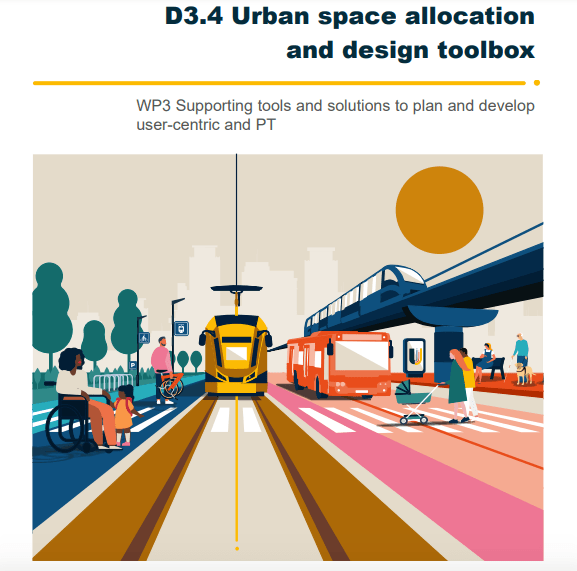UPPER and the Mobility Week 2024. When #PublicSpace Matters!
Public transport and shared public space are indeed two sides of the same coin, working together to enhance urban living leading to more livable, sustainable, and inclusive cities, where residents can thrive and connect. Urban planners and policymakers should ensure both are prioritized to cultivate environments that promote health, community, and economic vitality.
Shared public space also happens to be the official theme of the 2024 #MobilityWeek and we could not be happier to release the Deliverable during the European Commission’s flagship awareness-raising campaign on sustainable urban mobility.
Deliverable D3.4 led by project partner ETRA aims to document the efforts to advance towards sustainable, public transport-oriented urban spaces by enhancing multimodal hubs, redesigning urban neighbourhoods to prioritize public transport and active mobility, reallocating urban space from parking to PT and social purposes, and integrating innovative urban mobility planning concepts. In particular, the developments required by each of the pilot sites to develop measures around two main topics:
• Redistribution of Urban Space:
These measures involve the strategic reconfiguration of urban areas to shift the emphasis from private vehicles towards pedestrians, public transport, and sustainable modes like cycling. By repurposing roadways, parking spaces, and public spaces, this category seeks to create a safer and more attractive environment for alternative modes of transportation, making the urban landscape more conducive to walking, cycling, and using public transport. This is also a key approach to achieving behavioural change in favour of public transport and active modes. The redistribution of urban space could be therefore considered as the physical intervention to achieve this objective.
Multimodality (Physical Integration of mobility services and Hub Creation):
This category encompasses the establishment of multimodal transportation hubs and the introduction of diverse transportation options within those hubs. By connecting various modes of transportation such as walking, cycling, buses, trains, and potentially micro-mobility services, these measures aim to simplify and streamline the process of
switching between different transport modes for a more seamless travel experience.
Under the category of Redistribution of Urban Space, the following measures:
• VAL_01: Redistribution of urban space with a focus on Mobility as a Right.
• ROM_08: Designing the urban space to promote active travel modes, PT and environmental 30 zones.
• MAN_08: Redesign urban space and test alternatives for using it for social purposes.
• LIS_05: To enhance multimodal interconnection with the peri-urban municipalities

Under the category of Multimodality (Physical Integration of mobility services and Hub Creation) the following measures:
• VAL_02: Creation of a network of multimodal hubs.
• ROM_03: New mobility services in multimodal interchange nodes.
• OSL_02: Consistent visual identity for PT and mobility hubs.
• OSL_06: More inclusive micromobility.
• MAN_07: Create a network of mobility hubs in cooperation with the regional transport association,
open for multi-mobility providers.
• LIS_09: To improve the integration of PT and active travel modes.
• TES_02: To simulate and analyse the needs of PT for LEZ demand fulfilment.
• HAN_03: Added-value services in multimodal nodes to integrate PT with active modes.
• TES_08: To create new incentive-based services in the MDMS to increase the use of PT

Download the full Deliverable here
We stay true to our Mobility as a right concept #MAAR Accessibility + Inclusiveness= Freedom ❤️

